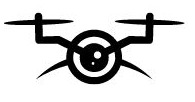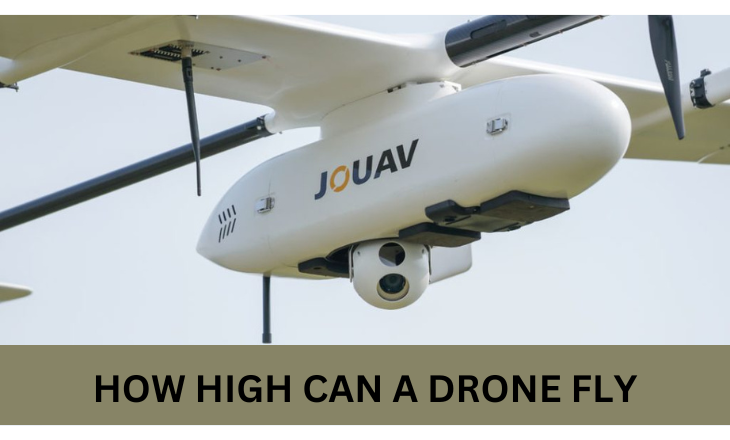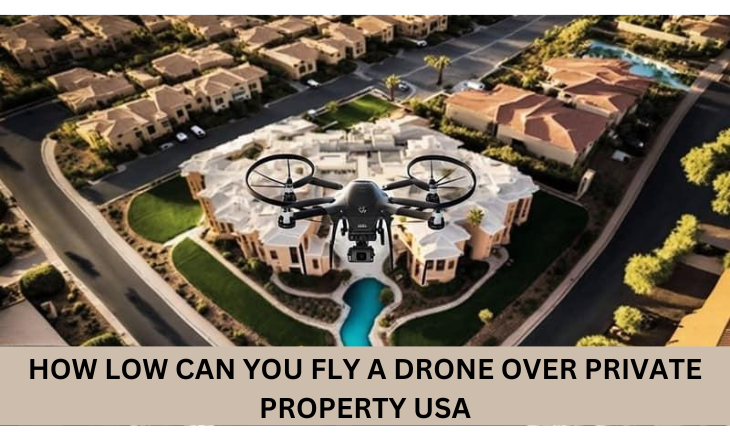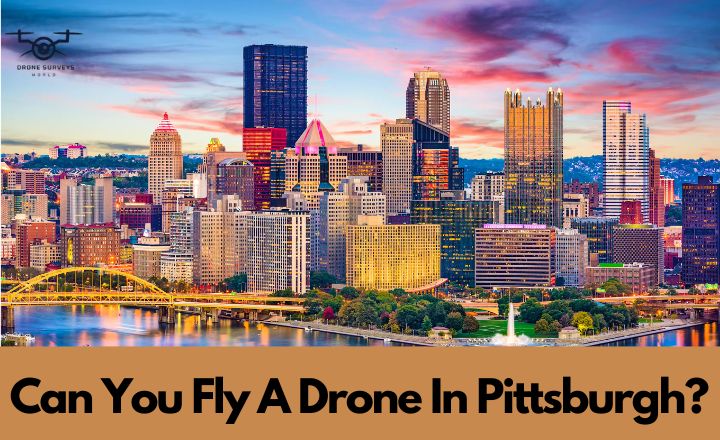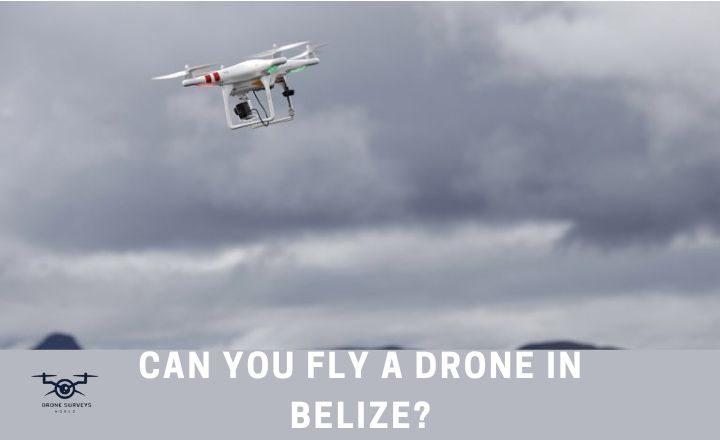Today, drones fly high in the sky, expanding human exploration and technology. But the question arises in people’s minds: How high can a drone fly? The drone can fly up to 400 feet high according to rules set by the Federal Aviation Administration. To fly above this height requires regulations to follow. Read more to explore all the rules.
How High Can Drones Fly Legally In USA? | What Is The Maximum Altitude A Drone Can Fly?
In the United States, FAA rules limit drones to flying up to 400 feet high. Some drones can fly higher. To fly a drone higher than 400 feet, you must get permission from the FAA by explaining the flight plan and safety measures in a waiver.
The rule is meant to stop drones from crashing into planes, which usually fly 500 feet or higher outside airports. But drones can go above 400 feet when they’re near buildings or other tall things, as long as they stay far away from planes.
Most consumer drones can fly over 1,000 feet, but they’re usually programmed to stay under 400 feet to follow the rules. Commercial drone operators with FAA Part 107 licenses can request permission to fly higher than the legal limit by submitting detailed plans and safety measures. Approval from the FAA can take up to 90 days and requires a lot of paperwork.
Flying drones above 400 feet regularly require a waiver from the FAA. Before flying at high altitudes, drone pilots must know and follow all laws and rules for safety, Which is the top priority when flying drones.
Crossing Boundaries In Different Countries
Most countries have a 400-foot limit for drone flights to ensure safety in the airspace. Rules vary by country. In the United States, drones must stay under 400 feet, with some exceptions. The United Kingdom and Australia also have the same limit. In France, recreational users can fly up to 492 feet, and in Germany, up to 230 feet. In Spain, the limit is 384 feet.
Regulations are changing globally.
| Country | Drone Flying Height Limit | Drone Altitude Authority |
| Argentina | 400 feet (120 meters) | National Civil Aviation Administration ANAC |
| Australia | 400 feet (120 meters) | Civil Aviation Safety Authority CASA |
| Brazil | 400 feet (120 meters) | National Civil Aviation Agency ANAC |
| Canada | 400 feet (120 meters) | Transport Canada |
| China | 400 feet (120 meters) | Civil Aviation Administration of China CAAC |
| France | 492 feet (150 meters) | Directorate General for Civil Aviation DGAC |
| Germany | 230 feet (70 meters) | Federal Aviation Office LBA |
| India | 400 feet (120 meters) | Directorate General of Civil Aviation DGCA |
| Indonesia | 500 feet (150 meters) | Directorate General of Civil Aviation DGCA |
| Italy | 492 feet (150 meters) | National Civil Aviation Authority ENAC |
| Japan | 492 feet (150 meters) | Ministry of Land, Infrastructure, Transport and Tourism MLIT |
| Mexico | 492 feet (150 meters) | Directorate General of Civil Aeronautics |
| Netherlands | 400 feet (120 meters) | Human Environment and Transport Inspectorate |
| Poland | 492 feet (150 meters) | Civil Aviation Authority CAA |
| Russia | 492 feet (150 meters) | Federal Air Transport Agency Rosaviatsiya |
| South Africa | 400 feet (120 meters) | South African Civil Aviation Authority SACAA |
| Spain | 384 feet (120 meters) | State Agency for Aviation Safety AESA |
| Turkey | 400 feet (120 meters) | Directorate General of Civil Aviation |
| United Kingdom | 400 feet (120 meters) | Civil Aviation Authority CAA |
| Panama | 400 feet (120 meters) | Civil Aviation Authority AAC |
Legal limits restrict how high drones can fly, but some can go up to 10 kilometres. Flying too high is dangerous and breaks rules around the world. Pilots should check local rules before flying and stay within the allowed heights for safe and legal drone use.

How High Do Drones Fly Physically?
Drones have built-in altitude limits, but they can fly higher without rules. The highest they can go depends on factors like absolute ceiling, service ceiling, and range.
absolute ceiling
The absolute ceiling is the highest altitude a drone can reach before it can’t climb anymore. The drone’s engines are at full power but can only lift the aircraft’s weight, not push it higher. Factors like air temperature and the drone’s weight determine the absolute ceiling. A heavier drone will reach its ceiling faster, and changes in air density at high altitudes make it harder to gain lift.
The highest altitude during a flight also changes.
| Drone | Maximum Service Ceiling (with specifics) | Considerations/Interference at Altitude |
| DJI Inspire 3 | 7000m (22965ft) | – Commercial aircraft cruise altitude – Reduced oxygen for combustion – Colder temperatures |
| DJI FPV | 6000m (19685ft) | – Near cruising altitude for some aircraft – Reduced air pressure – Potential radio interference |
| DJI Mavic 3 Pro | 6000m (19685ft) | – Near cruising altitude for some aircraft – Reduced air pressure – Potential radio interference |
| Parrot ANAFI Ai | 5000m (16404ft) | – Gliders, weather balloons – Reduced propeller efficiency |
| DJI Avata | 5000m (16404ft) | – Gliders, weather balloons – Reduced propeller efficiency |
| DJI Air 2S | 5000m (16404ft) | – Gliders, weather balloons – Reduced propeller efficiency |
| Autel Evo Nano Plus | 4000m (13123ft) | – Some high terrain areas – Reduced engine power – Unpressurized aircraft altitude |
| DJI Mini 3 Pro & DJI Mini 3 | 4000m (13123ft) | – Some high terrain areas – Reduced engine power – Unpressurized aircraft altitude |
| DJI Mini 2 SE | 4000m (13123ft) | – Some high terrain areas – Reduced engine power – Unpressurized aircraft altitude |
As conditions change or the aircraft uses up fuel and becomes lighter, it might be able to climb higher. The peak altitude is always where thrust equals weight. The absolute ceiling is not the same as the service ceiling, which is when the climb rate slows down to 100 feet per minute, not quite stalling but slowing down a lot.
The absolute ceiling is the highest altitude where level flight is possible. The absolute ceiling is the highest altitude a drone can reach before it runs out of power to climb. At this limit, the thin air and heavy weight work together to prevent further ascent.
service ceiling
The service ceiling is the highest altitude a drone can reach while climbing at a rate of 100 feet per minute. The drone is still climbing, but it is going up much more slowly now. At the service ceiling, the drone can still climb a little, but it is not very powerful and it goes up very slowly. Different drones have different service ceilings.
Civilian and commercial drones usually can’t go higher than 10,000 feet. Military drones made for high-altitude missions can go up to 50,000 feet or more. The service ceiling is affected by things like battery life, payload weight, transmission strength, and weather.
Advanced military drones can fly higher than 50,000 feet. The MQ-4C Triton surveillance drone can reach 56,000 feet, and the MQ-9 Reaper attack drone can reach 50,000 feet.
Flight regulations usually keep them lower, around 400 feet, for safety. The service ceiling marks the point where the drone’s ascent slows down before stalling.
Flying a drone close to the ground considers safety and local regulations. Flying too low can pose risks to people and property, so it is crucial to adhere to any height restrictions set by your local aviation authority.
Maximum Range
When deciding how high a drone can fly, consider how far it can go. If the drone can’t go very far, it also can’t fly very high. Drone pilots need to know and stay within these limits to avoid accidents.
What Happens If you fly your drone above 400 feet?
Drone highest altitude is 400 feet. If you fly your drone above this without permission from the FAA, it can be dangerous. This is because planes and helicopters usually fly at 500 feet, and flying your drone at that height increases the risk of collisions.
It is also harder to see and control drones at higher altitudes. The FAA only allows licensed commercial operators to fly above 400 feet near structures like towers, as manned pilots can adjust their flight paths. Recreational fliers are not allowed to go above 400 feet without permission.
Breaking the rules can lead to fines or arrest. Regulations ensure that drones stay at lower heights for safety, and pilots should follow these rules.
Flying Drones Above 400 Feet: Extending How High Can A Drone Fly
The FAA sets a 400-foot limit for recreational drones, but commercial operators can get permission to fly higher with waivers.
Here are steps to legally fly above the 400-foot ceiling:
Determine Your Operational Need To Fly Higher Than 400 Feet.
Ask for waivers only for the essential parts of your mission and the altitude at which you plan to fly your drone.
Apply Via The FAADroneZone Website.
Apply through FAADroneZone website. Choose the Operational Waiver and give details about how high you want to fly.
Thoroughly Explain Safety Mitigations, Especially For Night Flights Above 400 Feet.
Explain why going higher than 400 feet is necessary and what risks are involved.
Respond Promptly To Any FAA Requests.
If you don’t provide follow-up info, your application to extend altitude may be cancelled.
Typically, Receive FAA Decisions Within 90 Days.
Approval may limit some operations, such as night flights above 400 feet.
Follow All Waiver Specifics For The Increased Ceiling.
Breaking the rules can lead to fines.
Equip Drones With Lighting For Flights Above 400 Feet At Night.
Waivers can let drones fly higher than 400 feet, but they don’t always get approved. The FAA closely watches airspace to keep it safe. You have to be responsible when you want to fly drones higher.

Risks Of Flying Drones Higher Into Airplane Airspace
Consumer drones can fly up to 400 feet, but some people fly them much higher, with one drone reaching 29,000 feet near Alma, Georgia. This is much higher than what recreational drones are supposed to do.
According to the Bard College Center for the Study of the Drone, there were 327 times when drones got too close to planes between 2013 and 2015, at altitudes from 5,000 to over 29,000 feet. In 2015, there were 51 incidents where drones got dangerously close to aircraft at high altitudes, coming within 50 feet of them.
Reports confirm that some drone operators are flying their drones at altitudes ranging from 5,000 to 29,000 feet, directly in the path of aeroplanes such as airliners, business jets, and other manned planes.
A small recreational drone could cause serious damage at high altitudes if it hits a fast-moving commercial jet. A 5-pound drone could break the cockpit windshield, harm flight controls, injure pilots, or damage an engine.
The National Transportation Safety Board said small drones could seriously damage aeroplane parts. A study in 2018 found that drones that weigh over 2 pounds are a big danger.
Drones hitting planes, losing control, and crashing from high up also put people on the ground at risk. That’s why the Federal Aviation Administration limits recreational drones to 400 feet high and away from aeroplane areas.
Drone operators must follow aviation rules and altitude limits to keep the sky safe. Even though some drones can fly high, responsible flying means obeying the rules.
Factors Affecting Drone Flight
Several factors affect how high can a drone fly.
Atmospheric Pressure And Drone Altitude
As drones fly higher, the thinner air makes it harder to fly well. They can’t go as fast, climb quickly, or stay in one place for a long time, and they use their battery more quickly. The air pressure drops as you go higher because the air becomes less dense. This means there is less force on the drone.
Flying a drone at high altitudes is hard because the air is even less dense. Most consumer drones can’t fly well at such high elevations because they don’t have enough power and stability.
winds and turbulence
Strong winds and turbulence can make it hard for drones to stay stable and fly properly. This can limit how high can a drone go. Even a small wind near the ground can become much stronger quickly. This is called the wind gradient.
The wind changes depending on the land. Rough ground and obstacles slow the wind more than smooth surfaces like water. In cities, the wind can be reduced by 40-50, while over oceans, it is only reduced by 20-30. This affects drones because the wind gets stronger higher up.
Here’s a simple table that shows how the average wind speed changes as the drone’s altitude increases.
| Altitude (km) | Average Wind Speed (m/s) | Effects on Drones | Can a Drone Fly at This Height? |
| 0 | 0 (due to no-slip condition) | Most Commercial drones may struggle; specialized drones are required. | Yes |
| 1 | 10-20 | Mild to moderate effect; may cause slight drifting. | Yes |
| 2 | 20-30 | Potential for stronger drift; increased stabilization needed. | Specialized high-altitude drones are required. |
| 3 | 30-40 | High drift potential; advanced stabilization and power required. | Almost no drones can operate here, near the edge of the Earth’s troposphere. |
| 4 | 40-50 | Very high drift; high risk of losing control. | Very few drones can operate at this altitude. |
| 5 | 50-60 | Extreme conditions; very high risk of losing control. | Almost no drones can operate here; near the edge of the Earth’s troposphere. |
Temperature
Both low and high temperatures affect drones. Very cold or hot conditions reduce battery performance, which means the drones can’t fly for as long. Air density changes with temperature, affecting how much lift the drone can generate.
The air is thinner at higher altitudes, so the propellers can’t push against it as effectively to lift the drone. This limits how high the drone can fly before it stalls out. Drones flown at extreme elevations, like the Himalayas, need modified props to create enough lift in the thin air.
Which Is The highest flying drone? | Highest Drone Altitude
The Zephyr, a solar-powered drone developed by Airbus Defense and Space, holds the record for flying the highest at 70,748 feet above ground level (21,562 meters). It was designed for long-endurance flights and set a world record for the longest flight, which lasted more than two weeks in the air. This makes it one of the highest-flying drones that can fly continuously.
The Zephyr S is a light aeroplane with two small electric motors. It gets power from solar panels on its wing and tail. It can fly at a top speed of 56 km/h. High-altitude drones have many uses for both the military and civilians. They can be used for emergency communications and monitoring the environment.

How High Can Military Drones Fly?
Military drones fly higher than commercial drones. The MQ-20 Avenger can fly up to 50,000 ft (15,240 meters) above sea level.
These drones are designed for surveillance, reconnaissance, and other specialized missions. They have advanced sensors, cameras, and other technology for their operations.
The Altitude Limits Of Military drones
The U.S. Air Force uses the MQ-20 Avenger, which can fly up to 50,000 feet. The U.S. Navy uses the Northrop Grumman X-47, which can fly up to 40,000 feet. The U.S. Air Force and the CIA use the Lockheed Martin RQ-170 Sentinel, which can fly up to 50,000 feet. The U.S. military recently bought the Skydio X2D Drone, which can only fly up to 8,000 feet.
Military drones usually fly at altitudes up to 50,000 feet, but some have lower limits—these limits for safe and effective operation. Most commercial drones fly at low altitudes, usually up to 400 feet. They are used to take pictures and videos from the air and are not meant to fly as high as military drones.
Conclusion
How high can a drone fly? Drone can fly up to 400 feet high. Technology is making drones able to fly higher. It’s important for drone users to follow safety rules to avoid accidents and use airspace responsibly. Knowing the limits and options for drone heights is key for all users. By staying informed and following rules, we can safely fly drones while respecting flight limits. Let’s keep improving drone tech while focusing on safety and responsibility in the sky.
Frequently Asked Questions
What is the Highest a Drone can Fly?
In different places, the highest you can fly a drone legally depends on the rules. In the United States, the Federal Aviation Administration (FAA) sets the highest altitude at 400 feet for recreational drone flights to keep things safe and avoid problems with other aircraft.
Can Drones fly at Night?
Yes, drones can fly at night. They have LED lights and sensors to navigate in low light. Some drones also have night vision cameras and infrared sensors for clear images in the dark.
How High can Drones go?
Different countries have different rules about how high a drone can fly. In the United States, the Federal Aviation Administration (FAA) usually sets the limit at 400 feet (about 122 meters) above the ground. This rule is to keep other aircraft and people on the ground safe.
